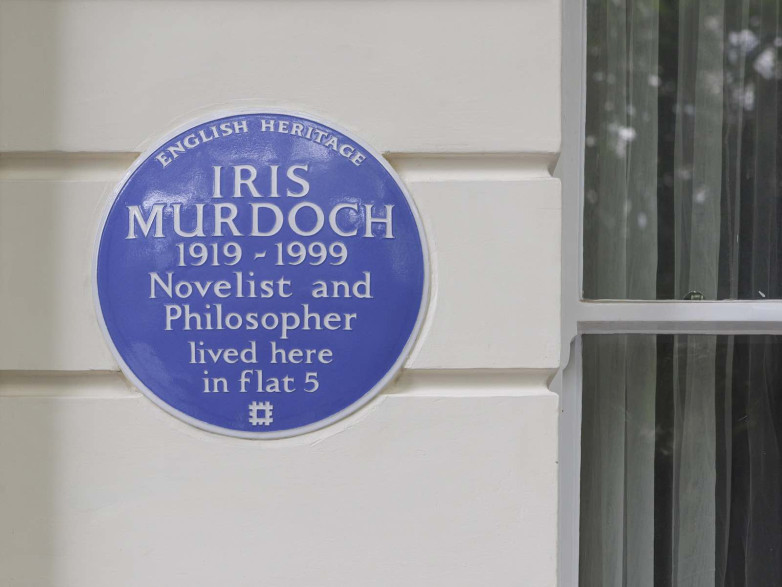Novelist Iris Murdoch Commemorated with a Blue Plaque

Iris Murdoch's Blue Plaque
The Dublin-born novelist and philosopher Iris Murdoch has been commemorated with one of English Heritage's iconic Blue Plaques.
The plaque marks number 29 Cornwall Gardens, London, part of a grand Italianate stucco-fronted mid-Victorian terrace where she occupied a top floor flat. Murdoch loved London and for more than 25 years she would spend three days a week in her Kensington flat. London was the setting or part-setting for 24 of her novels. Murdoch herself referred to London as "another main character in my fiction".
Literary historian, author and Blue Plaques Panel member Claire Harman, said: “During the time that Murdoch lived here she wrote some of her great ‘London’ novels of the 1970s, The Sacred and Profane Love Machine in 1974, A Word Child in 1975 and Henry and Cato in 1976. She really drew inspiration from London and I am delighted that we can celebrate her in return.”
Murdoch published 26 novels in all, as well as poetry and plays. By 1958, with the publication of The Bell, the New Statesman was calling her ‘the foremost novelist of her generation’ while the Times Literary Supplement praised its rare conjunction of a 'brilliant imagination and a passionate concern for conveying … moral concepts'. The Sea, The Sea (1978) won the Booker Prize.
Other female writers commemorated by English Heritage’s London Blue Plaques Scheme include Ivy Compton-Burnett (also in Cornwall Gardens) Virginia Woolf, Frances Hodgson Burnett and Dame Agatha Christie. Out of over 200 plaques dedicated to notable figures in literature, only around 35 are dedicated to women and just over 15% of the 1000+ official London Blue Plaques celebrate women. However, English Heritage’s ongoing 'plaques for women' campaign has seen a dramatic rise in the number of public nominations for women since it launched in 2016. A spokesperson for English Heritage emphasised that nominations are the lifeblood of the London Blue Plaques scheme and that it welcomed more female suggestions.
Similar blue plague schemes operate around the country and recent installations include those for Josephine Tey and famous 'Bluestocking' Elizabeth Montagu. A faux blue plaque created by author and illustrator Raymond Briggs is currently on display as part of the exhibitin Bloomin’ Brilliant: The Life and Work of Raymond Briggs at Ditchling Museum of Art + Craft which runs until October 27.
The London-wide Blue Plaques scheme has been running for 150 years. The idea of erecting ‘memorial tablets’ was first proposed by William Ewart MP in the House of Commons in 1863. It had an immediate impact on the public imagination, and in 1866 the (Royal) Society of Arts founded an official plaques scheme. The Society erected its first plaque – to poet, Lord Byron – in 1867. The scheme was taken on by English Heritage in 1986.















